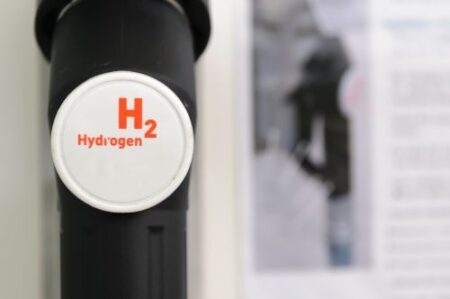In today’s Globe and Mail, Report on Business, Adam Radwanski and Emma Graney write about a cooperative agreement between Germany and Canada on a clean-energy transition focused on renewable and hydrogen energy with the latter playing a central role.
Both countries have an interest in replacing fossil fuel sources but each has a different strategy in implementing hydrogen as an alternative energy source. Canada’s approach includes producing the gas from feedstocks that include fossil fuels. Germany’s mindset is to produce hydrogen through non-fossil fuel sources.
Hydrogen production comes in three shades: grey, blue, and green.
Grey hydrogen – is extracted from oil and natural gas producing greenhouse gases that contribute to global warming.
Blue hydrogen – is as above but the carbon emissions in the production process are captured, sequestered, or repurposed so that they do not contribute to global warming.
Green hydrogen – is produced from zero-emission renewable energy sources.
Canada is looking for a way to support its flagging oil sands operations and therefore is looking at grey and blue shades in its hydrogen production strategy. The country’s eastern half is generously endowed with hydro, wind, and nuclear net-zero energy sources that can produce green hydrogen. But it appears that the national concern is, in the short term, to try and sustain jobs in Alberta, and Saskatchewan, the heart of the country’s fossil fuel industry.
Germany seeks to wean itself off coal after its decision to end all nuclear energy production. In pursuit of its net-zero emissions goal, it wants to import green hydrogen. In the interim, it may consider blue but certainly not grey. Currently, blue hydrogen despite the high cost of carbon capture and sequestration (CCS) projects, is cheaper than green states the Globe and Mail article. I find that statement dubious to say the least.
Blue hydrogen is produced from natural gas using a number of different technologies. The CCS or CCUS (the U stands for utilization) technology captures the carbon emissions (CO2) at the back end of the process. In some cases, the captured CO2 can be put to industrial uses. Costs can be measured by per ton of CO2 captured and vary dramatically based on the methodology employed.
Here are some different ways the CO2 captured from blue hydrogen operations can be used along with projected costs per ton:
- Catalysts and chemical processes used to capture and repurpose CO2 into methanol, urea, or polymers at an estimated cost between $80 and $300 USD per ton.
- Captured CO2 and hydrogen combined to be turned into synfuel at current costs as high as $670 per ton.
- CO2 injected into microalgae to produce green fuels and chemicals at a cost of between $20 and $920 per ton.
- Captured CO2 to cure cement or be added to aggregates for construction with costs between $30 and $70 per ton.
- CO2 captured at the emission source, compressed, and transported by pipeline to be injected into older oil fields to give them new life at a cost of between $40 and $60 per ton.
Green hydrogen dispenses with all of these added costs but suffers from a non-competitive tax and regulatory regime. Produced using electrolyzers to split water into hydrogen and oxygen, the biggest cost is the electricity used. To produce a kilogram of green hydrogen today, operators need to use 55 to 60 Kilowatt hours of electricity. In most jurisdictions, electricity is regulated and taxed at different rates based by sources such as wind, hydro, solar, geothermal, or nuclear power, and often the added costs are not reflected in blue and grey hydrogen produced from fossil fuel sources. That gives the latter an unfair advantage.
Governments like Germany and Canada, seeking to make green hydrogen a central pillar to a net-zero emissions goal, therefore, need to consider fiscal and tax policy reforms. Once done, green hydrogen will be more than cost-competitive with both blue and grey.
The Globe and Mail article states that Canada projects hydrogen as a $50 billion export market and a source of 350,000 new jobs by 2050. Germany has plans to spend $13 billion on hydrogen investments including imports to complement domestic production. If Germany balks at blue hydrogen which the current Canadian strategy is favoring, then it would make sense for the latter to take a look at the regulatory environment for the production and taxing of the green alternative and the abundance within the country of renewable electricity to produce the gas.

















Brilliant article on “Grey, Blue, and Green Hydrogen”, Mr. Rosen. I also bulked at that Globe and Mail article a few days ago when I read it, but I was missing your knowledge about the cost comparisons between blue and green hydrogen. Excellent analysis on your part.